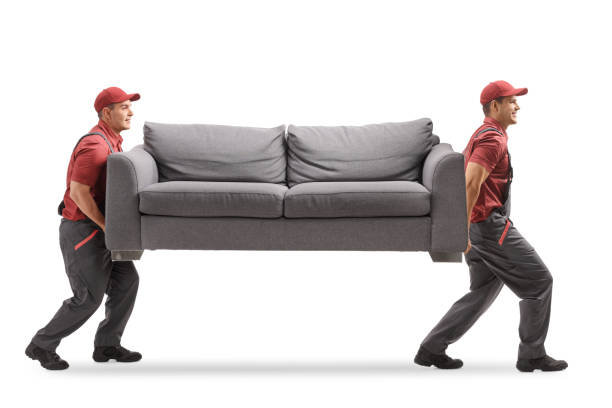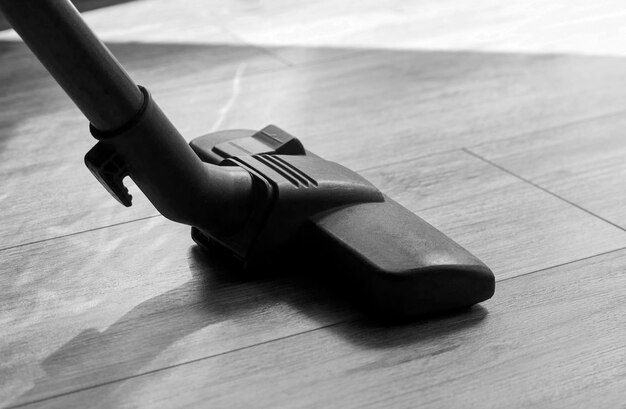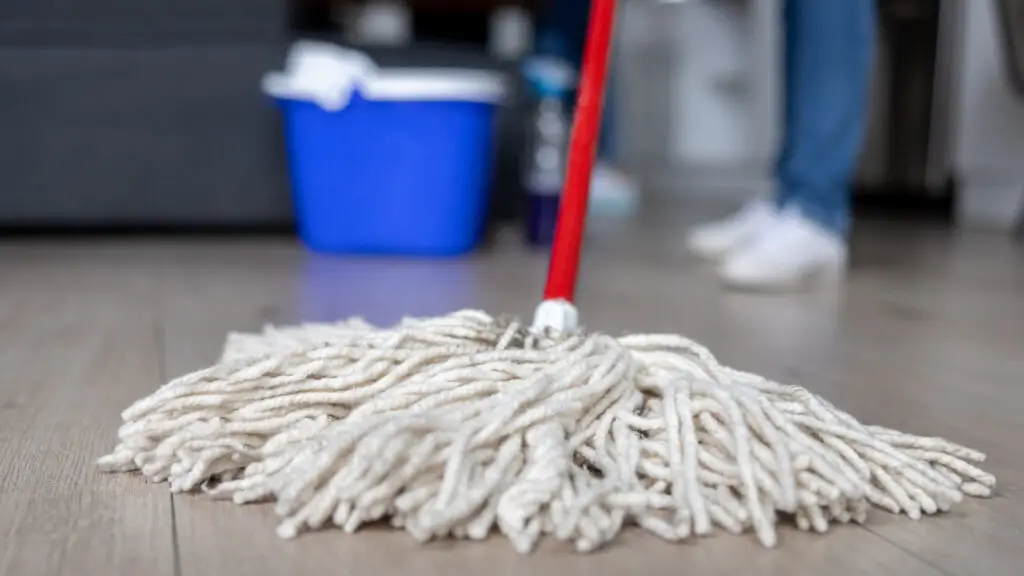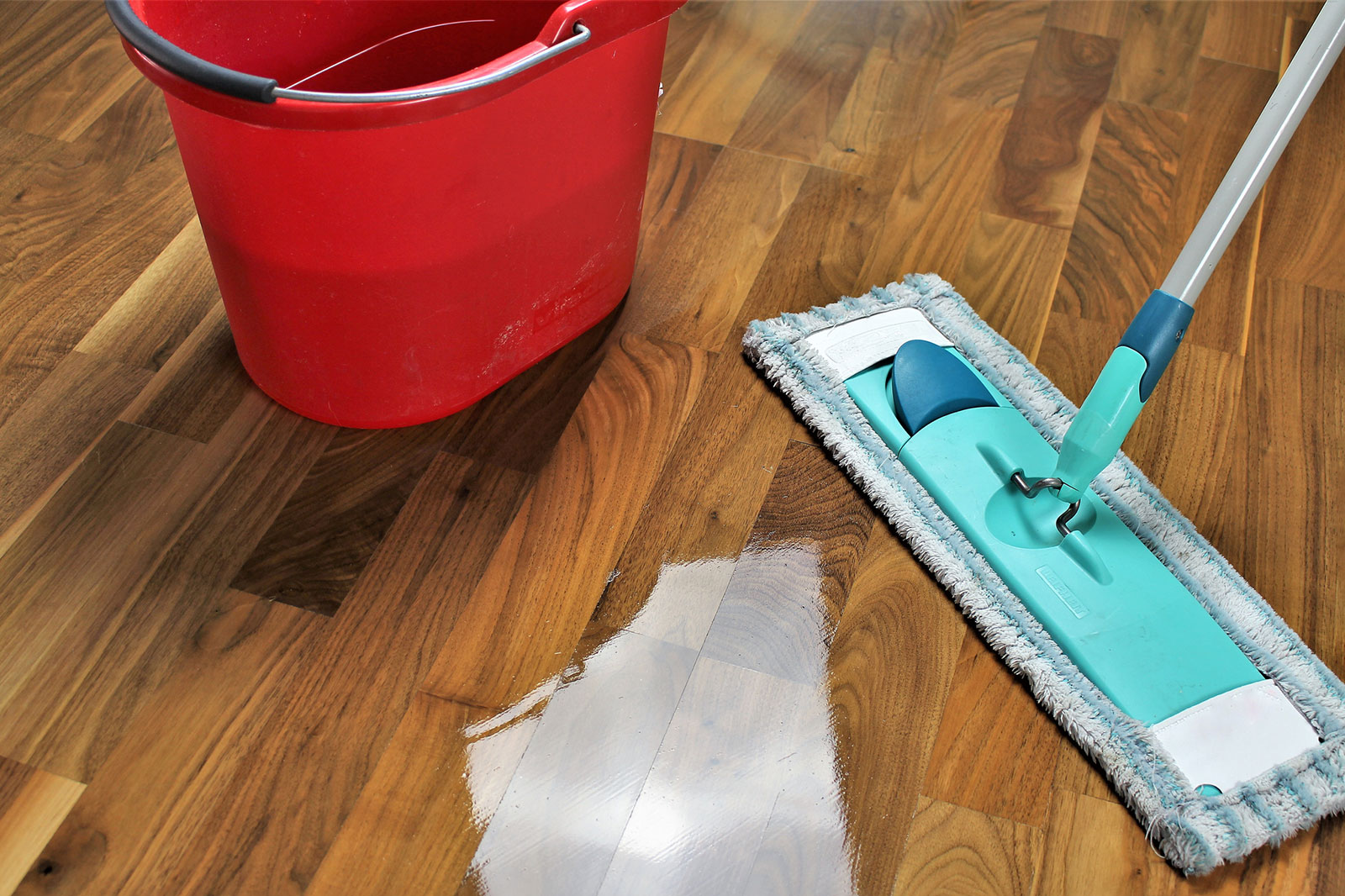Engineered oak flooring combines the warmth and beauty of natural wood with the durability and versatility of modern engineering. This unique blend makes it a popular choice for homeowners seeking a timeless aesthetic without compromising on practicality.
However, maintaining its allure requires proper care and cleaning techniques. This guide offers a comprehensive overview of how to clean engineered oak flooring effectively, ensuring it remains pristine and vibrant for years to come.
With focused tips and methods, you will learn the best practices to protect your investment and keep your engineered oak floors looking as good as new.
Preparation
Clear the Area

Before commencing the cleaning process, it is crucial to clear the space completely. This means removing all furniture, rugs, and any other items resting on the engineered oak flooring. By doing so, you ensure that every inch of the floor can be accessed without obstacles, allowing for a more thorough cleaning.
Taking the time to remove these items not only facilitates an efficient cleaning process but also protects your furniture and rugs from potential damage or exposure to cleaning solutions.
Remember to lift and carry furniture rather than dragging it across the floor to prevent scratches and scuffs on your engineered oak.
Sweep or Vacuum the Floor

The next crucial step in preserving the beauty of your engineered oak flooring involves the removal of dust, pet hair, and other debris that accumulates on the surface. Use a soft-bristle broom or a vacuum cleaner with a setting for hard floors.
Carefully sweeping or vacuuming ensures that abrasive particles are removed, preventing them from scratching the floor during the wet cleaning process.
It’s important to pay special attention to corners and the spaces between floorboards, where dust tends to collect.
Dry Cleaning
Microfiber Mopping

Use a microfiber mop or cloth to gather any remaining dust left on your engineered oak floors. Microfiber materials are exceptionally soft and effective at trapping dust, hair, and other small particles without the need for cleaning chemicals.
Glide the mop or cloth gently over the surface in smooth, even strokes to ensure total coverage. This method is far preferable to using a traditional broom, which can have stiff bristles that may scratch and damage the subtle grain of the oak flooring.
Avoid Brooms
While it might be tempting to use a broom for quick clean-ups, it’s crucial to avoid them for regular cleaning of engineered oak flooring. Brooms, especially those with natural fibers, can have uneven, stiff bristles capable of inflicting minute scratches on the floor’s surface.
Over time, these scratches accumulate, dulling the appearance of the oak and compromising its protective finish. Stick to using a microfiber mop or cloth for dry cleaning to maintain the flawless look of your flooring.
Wet Cleaning
Mix a Cleaning Solution
For maintaining the natural beauty of engineered oak flooring, it’s essential to use a gentle cleaning solution that doesn’t harm the wood’s surface or strip away its finish. A suitable DIY solution can be made by mixing a few drops of mild, pH-neutral liquid soap with a gallon of warm water.
Always avoid using harsh chemicals, abrasive cleaners, or those containing ammonia, as these can cause irreparable damage to the flooring.
This mild soapy solution will effectively clean the floor without compromising the integrity of the wood.
Mopping Technique

When wet cleaning engineered oak floors, it’s crucial to use a well-wrung mop to avoid introducing excessive water onto the wood’s surface. Excess moisture can seep into the floorboards, causing them to warp, swell, or even mold.
Dip your mop into the prepared cleaning solution, and wring it out thoroughly until it’s damp, not wet. Gently mop the floor, following the direction of the wood grain to ensure effective cleaning.
After mopping with the cleaning solution, go over the floor once more with a clean, damp mop to remove any soapy residue. This will leave your engineered oak flooring looking clean, refreshed, and beautifully maintained.
Stain Removal

Identify the Type of Stain
Identifying the type of stain on your engineered oak flooring is the first step toward effective stain removal. Stains can generally be categorized into three types: water-based, oil-based, and other substances such as wine or ink.
Water-based stains are typically lighter and include spills from beverages like tea or coffee. Oil-based stains come from substances such as cooking oils or beauty products and tend to darken the wood.
Stains from wine, ink, or pet accidents can penetrate deeply into the wood if not addressed promptly.
Accurately identifying the stain type is crucial, as it determines the appropriate cleaning method and solutions to be used for removing the stain without damaging the floor.
Cleaning Solution Application
Apply the identified cleaning solution directly onto the stain, using just enough quantity to cover it without flooding the area. It’s important to use a specific cleaner based on the type of stain you’re dealing with. For water-based stains, a mild detergent mixed with water can be effective.
Oil-based stains may require a slightly stronger solution, such as a mixture of water and vinegar or a specially formulated wood cleaner.
Gentle Rubbing Technique
Gently rub the stained area with a soft, clean cloth. The key is to perform this action delicately to avoid scratching or damaging the surface of the engineered oak flooring.
Circular motions or movements along the grain of the wood are recommended to ensure the cleaning solution penetrates the area effectively without harming the integrity of the wood.
Rinsing
Rinse Thoroughly
Use a clean, damp mop to go over the floor area where the cleaning solution was applied. It’s crucial to ensure that no residue of the cleaning solution is left on the surface, as this could potentially attract more dirt or even damage the finish of the engineered oak flooring over time.
Move the mop gently across the area, rinsing it frequently in clean water to avoid spreading the solution further.
Dry Floor Area
After thoroughly rinsing the area, it’s important to dry the floor completely to prevent any water damage, such as warping or staining. Use a soft, dry cloth or a microfiber mop to absorb any remaining moisture gently. Ensure the floor is completely dry before allowing foot traffic in the area again.
Related Topics:
Drying
Air Drying
Allowing the engineered oak flooring to air dry is a natural and effective method to ensure all moisture has evaporated. Open windows and doors to improve air circulation or use fans directed towards the damp area to accelerate the drying process.
The floor must be completely moisture-free before the area is used again to prevent damage or the growth of mold and mildew.
Accelerated Drying
For a quicker drying method, using a dry mop or a microfiber cloth to absorb the remaining moisture can be highly effective. Gently run the dry mop over the surface of the flooring, ensuring that all water is absorbed.
The floor must be entirely dry before furniture and rugs are replaced to avoid trapping moisture beneath them, which could lead to warping or mold development.
Maintenance Tips
To minimize scratches and dents, affix protective pads under all furniture legs. These pads create a soft barrier between heavy furniture and your engineered oak flooring, distributing weight more evenly and preventing direct damage from furniture movements.
Positioning rugs in areas that receive a high volume of foot traffic, such as hallways and near doorways, can significantly reduce wear and tear on the flooring. Rugs not only add a decorative touch but also capture dirt and debris that could scratch the floor surface.
Sharp objects, including high heels and pet claws, can leave permanent marks on engineered oak flooring. It is advisable to avoid walking on the floor with high heels and to keep pets’ nails trimmed. Additionally, when moving furniture, lift rather than drag it across the floor to prevent scratches.
Fluctuating humidity levels can cause engineered oak flooring to warp or split. Maintaining a consistent indoor humidity level, ideally between 40% and 60%, helps preserve the integrity and appearance of the flooring. Use humidifiers or dehumidifiers as necessary, depending on the season and indoor conditions.
Conclusion
Engineered oak flooring is a remarkable combination of the natural elegance of oak and the advanced durability provided by engineering. This flooring option offers a timeless elegance that enhances the aesthetic appeal of any home, making it a favored choice among homeowners who do not want to sacrifice style for practicality.
Proper care and maintenance are key to ensuring that engineered oak floors maintain their beauty and longevity. This guide has outlined essential tips and techniques for effectively cleaning and preserving engineered oak flooring.
From the initial preparation steps of clearing the area and removing dust to the detailed processes of dry and wet cleaning, each method is designed to protect your flooring while keeping it looking as pristine as the day it was installed.
Remember, taking the time to care for your floors properly is not just about maintaining their appearance; it’s about preserving your investment in quality flooring that stands the test of time.
FAQs
Can engineered oak flooring be refinished?
Yes, engineered oak flooring can typically be refinished 1-2 times during its lifespan. The possibility and frequency of refinishing depend on the thickness of the hardwood veneer layer on top.
How long does engineered oak flooring last?
With proper care and maintenance, engineered oak flooring can last anywhere from 20 to 30 years, making it a durable option for residential homes.
Is engineered oak flooring suitable for kitchens and bathrooms?
Engineered oak flooring is more resistant to moisture and temperature fluctuations than solid wood, making it suitable for kitchens. However, for bathrooms, where moisture levels are consistently high, it’s essential to consult with flooring specialists to ensure compatibility and prevent damage.

2 thoughts on “How To Clean Engineered Oak Flooring”